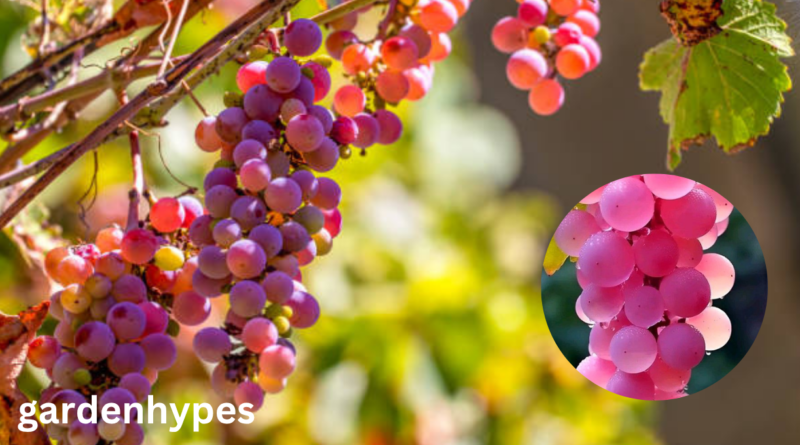Pink Grapes A Sweet Treasure for Your Health and Taste Buds
Pink grapes aren’t just another pretty fruit sitting on the grocery shelf—they’re a powerhouse of nutrition wrapped in a sweet, juicy package. If you’ve ever bitten into a plump, pink grape, you know it’s more than just a treat for your taste buds. But did you know they pack some serious health benefits, too? From antioxidants to skin-loving vitamins, these little gems deserve a lot more attention. Let’s uncover everything you need to know about pink grapes—from where they came from to why they should be part of your daily diet.
click in link Grapes Expensive
Introduction to Pink Grapes
What Are Pink Grapes?
Pink grapes are a variety of table grapes that sit somewhere between red and green grapes in color. With their translucent blush tone, they’re often mistaken for red grapes—but true pink grapes have a distinct flavor and nutritional profile. Their taste is subtly sweet with a slight floral note, making them especially enjoyable for those who find red grapes too intense and green ones too tart.
Unlike their darker or greener cousins, pink grapes are known for their delicate balance of sweetness and mild acidity. You can find them in various parts of the world, though they’re most commonly grown in Mediterranean climates and parts of the United States like California. They typically grow in clusters, and their skin is thin yet firm, housing juicy flesh that bursts with flavor.
These grapes are popular not only because they taste great but also because of their impressive shelf life and low maintenance. Their color isn’t just eye-catching—it’s a sign of the unique phytonutrients within, which we’ll explore more in the nutrition and health benefits sections.
Whether you’re tossing them into a salad, freezing them for a healthy snack, or simply popping them by the handful, pink grapes are one of nature’s tastiest gifts.
Brief History and Origin of Pink Grapes
Grapes as a species have been cultivated for over 6,000 years, and pink grapes are a more recent variation resulting from selective breeding and hybridization. These hybrids were developed to bring out specific qualities—like a particular flavor, texture, or color—without sacrificing the grape’s natural integrity.
Most pink grape varieties trace their origins to Mediterranean regions where viticulture has long been a part of the culture. Over time, growers noticed that some red grape plants began producing lighter-colored fruit. These were crossbred and refined to create the pink grapes we enjoy today. The emphasis was on enhancing the sweetness and shelf stability while keeping the appealing color that stands out in markets.
In recent decades, pink grapes have gained popularity in North America, South America, and Asia, especially in countries like Japan and South Korea, where fruit presentation is almost as important as taste. High-end varieties like “Cotton Candy” grapes sometimes appear in pink hues and are prized for their exotic flavor.
The evolution of pink grapes reflects both our desire for new flavors and a deeper appreciation for fruit as a luxury, not just a snack. What was once a rare find in boutique grocers has now become more widely available, thanks to increased demand and improved cultivation techniques.
Nutritional Value of Pink Grapes
Key Vitamins and Minerals
Pink grapes are far more than just eye candy. They offer an impressive array of vitamins and minerals that contribute to overall health. For starters, they’re a great source of vitamin C, which helps boost immunity, improve skin health, and fight free radicals. A single cup of pink grapes can give you about 27% of your daily recommended intake of vitamin C.
You’ll also find vitamin K, essential for bone health and blood clotting, and vitamin B6, which supports brain development and mood regulation. Pink grapes also deliver small amounts of iron, potassium, magnesium, and calcium—all critical minerals your body needs to function properly.
Let’s not forget about the polyphenols, like resveratrol, found in the skin of pink grapes. Resveratrol is known for its heart-protective benefits and its role in reducing inflammation. These natural compounds give pink grapes their vibrant color and deliver anti-aging and anti-cancer properties.
click in link Grapes Expensive

Here’s a quick snapshot of the nutrients found in 1 cup (151 grams) of pink grapes:
| Nutrient | Amount |
| Calories | 104 kcal |
| Carbohydrates | 27.3 g |
| Sugars | 23.4 g |
| Fiber | 1.4 g |
| Protein | 1.1 g |
| Vitamin C | 27% DV |
| Vitamin K | 28% DV |
| Potassium | 288 mg |
| Resveratrol | Present |
So, if you’re snacking on a bunch of pink grapes, you’re not just satisfying a sweet tooth—you’re giving your body a nutrient-rich treat.
Caloric and Sugar Content
Let’s talk about the sweet stuff—literally. Pink grapes are naturally high in sugar, but it’s the kind your body knows how to handle when consumed in moderation. Most of the sweetness in pink grapes comes from fructose and glucose, which give you a quick energy boost without the crash you’d get from processed sugars.
A cup of pink grapes has about 104 calories, with around 23 grams of sugar. While that may seem like a lot, it’s important to remember that these are natural sugars accompanied by fiber, water, and nutrients. Unlike soda or candy, grapes don’t just spike your blood sugar—they nourish your body in the process.
If you’re watching your sugar intake, pink grapes can still be part of your diet. Pair them with a protein like cheese or nuts to slow down sugar absorption. Or freeze them and eat them slowly as a dessert alternative—they satisfy sweet cravings with fewer consequences.
Also, the high water content in pink grapes—over 80%—helps keep you hydrated and feeling full, making them a surprisingly satisfying snack. They’re perfect for hot days, workout recovery, or anytime you need a little pick-me-up.
click in link Grapes Expensive

faqs
FAQ 1: Are pink grapes genetically modified?
No, most pink grapes are not genetically modified. They are typically developed through natural hybridization and selective breeding processes. Farmers crossbreed different grape varieties to achieve the unique pink hue, sweetness, and texture without altering the grapes’ genetic structure in a lab. So, when you eat pink grapes, you’re enjoying a naturally developed fruit.
FAQ 2: Can pink grapes help with weight loss?
Yes, pink grapes can be a great snack for weight management when eaten in moderation. They are low in calories and fat while offering fiber and water, which help you feel full. Plus, they contain natural sugars that can satisfy sweet cravings without turning to processed snacks. Just don’t overdo it—portion control is key.
FAQ 3: Are pink grapes safe for diabetics?
Pink grapes do contain natural sugars, so people with diabetes should consume them mindfully. However, their low glycemic index and presence of antioxidants like resveratrol can actually support better blood sugar control. Always check with a healthcare provider before including them regularly in a diabetic meal plan.
FAQ 4: Can I give pink grapes to children or toddlers?
Absolutely, but with caution. Pink grapes are a healthy, sweet snack for kids, full of vitamins and antioxidants. However, because they are round and slippery, they can be a choking hazard for toddlers. Always cut them in halves or quarters depending on the child’s age before serving.
FAQ 5: How should I store pink grapes to keep them fresh?
To keep pink grapes fresh longer, store them unwashed in the refrigerator inside a breathable bag or container. Only wash them right before eating to prevent mold or moisture buildup. When properly stored, they can last up to 1–2 weeks while maintaining their flavor and firmness
